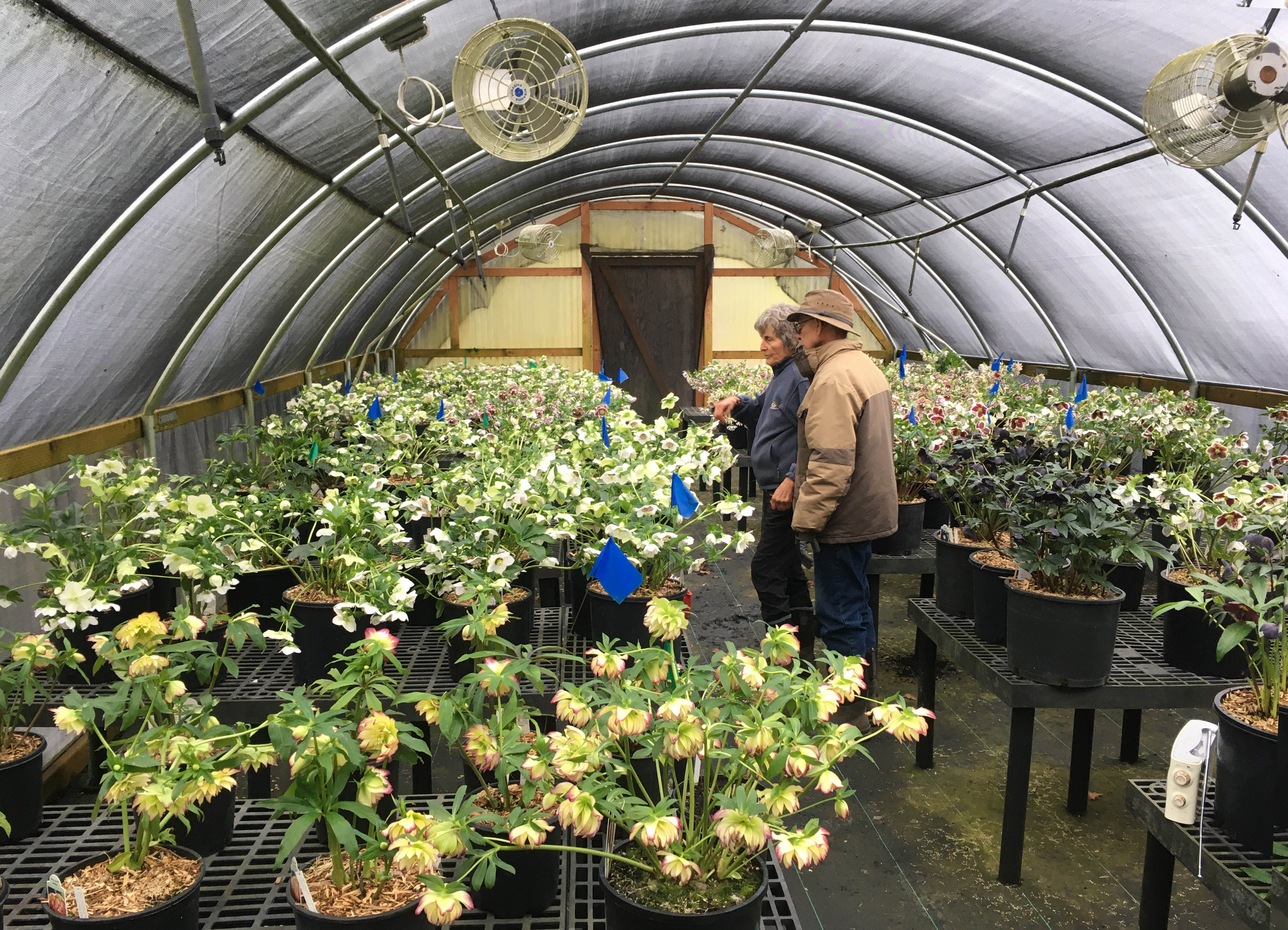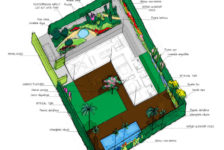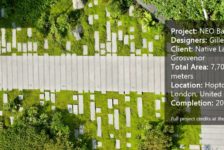
Ernie and Marietta O’Byrne of Northwest Garden Nursery in Eugene, Oregon, have spent decades selecting, perfecting and growing the Winter Jewels strains of Helleborus x hybridus. This decades-long work resulted in markedly improved plants with increased garden worthiness, brighter, and larger flowers.
How often have you gotten excited about a plant you’ve encountered and enthusiastically included it in a design – then had your hopes dashed when a contractor just can’t find it anywhere?
Whether or not a plant performs well in the landscape is an entirely different matter from its ease of production in a nursery context. Many excellent plants for landscape are difficult to produce. Some are difficult to propagate, others don’t thrive in a nursery setting, many are infuriatingly slow. When you ask – “why isn’t [fill in the blank plant] available”, there probably are reasons. Those might not be reasons that matter to you as a landscape architect, but they affect the material that you have to work with so it’s good to understand them.
Plants don’t end up in nurseries just because they’re beautiful or ecologically valuable. They have to also fit the constraints of the commercial nursery industry. Getting good plants to nurseries – and getting them there consistently – requires immense knowledge, labor, and skill.
Here are some basic aspects of the plant production process that shape what you see on availability lists, in wholesale nurseries, and – eventually – on your job sites for installation.
Propagation:
Making new plants is known as propagation. The two main modes of plant propagation are sexual reproduction (in which every resulting plant is genetically different) or asexual reproduction (in which every resulting plant is genetically identical).

Propagation by seed can be a slow process – these Paris hybrid seedlings took over 2 years to germinate and have been growing for 2 years at Northwest Garden Nursery in Eugene, Oregon. Each plant reflects an investment of time and care, as well as the expertise needed to grow this unusual group of plants.
Sexual reproduction usually starts with seed. As with anything else with plants, there are a few exceptions. Ferns, for example, sexually reproduce through spores. But for most sexual reproduction, you’ll start with a seed.
Seeds are usually planted into a growing medium of finely milled peat moss, compost, coconut coir or other organic material with perlite and/or vermiculite. For seed starting, growers will typically sterilize the growing medium to minimize the presence of moss, mold, fungus and any other organisms that might damage vulnerable young seedlings. Planted seeds are kept lightly moist and given the light and warmth conditions that will stimulate them to germinate.
Each species has adapted to specific moisture, temperature and light conditions that instigate germination of seeds. Expert growers recreate the conditions under which a plant evolved in order to achieve germination. Some plants require special treatment of the seeds (such as cycles of chilling and heat, exposure to darkness, exposure to light, or even exposure to smoke) to stimulate germination. Other groups of plants are remarkably difficult or slow to grow from seed under nursery conditions.

Vriesea bromeliads at Bullis Bromeliads in Homestead, Florida. The uniformity of these plants reflects that they’re aesexually propagated.
Asexual reproduction starts with a piece of plant tissue that is placed into a growing medium – typically similar to a sterile seed starting medium – and allowed to grow. The simplest form of asexual reproduction is cuttings – when a chunk of the plant is cut off and planted into a medium until it forms roots and begins growing. Plants differ from animals in that they will often grow a new plant from a cut off part. Imagine being able to cut off your finger, put it in some soil, and grow a new you? Different plants can be reproduced from cuttings of different parts of the plant, usually with active growth points, including stems, buds, and even roots. Plants differ by species and even selection in which type of cutting will work, as well as in their ideal seasonality for propagation and their light/temperature needs.
The most dramatic form of asexual reproduction is tissue culture – where growing points of plants are dissected into tiny pieces, treated with growth hormones, and grown on gel medium. With tissue culture, hundreds and even thousands of plants can be produced from a single growth point. This makes production much faster and easier than more traditional propagation methods – but different plants respond in different ways. Bizarrely, despite tissue culture being a form of asexual reproduction, the chemical treatments used can stimulate genetic variation – occasionally resulting in plants that differ genetically from their parents. (In case you haven’t noticed yet, plants are weird and behave in unpredictable ways)
Another method of asexual reproduction to be aware of is grafting. In grafting, a small growth point of the desired final plant is physically bonded to the roots of another physically compatible plant. If the graft is successful, the two plants will fuse together. The roots will genetically remain the same and the top growth will be the desired variety. Why would you do this? Some woody plants, especially fruit trees, grapevines, some conifers, roses, and certain ornamental trees/shrubs grow substantially better when they’re grafted onto a different rootstock. It’s been an agricultural practice for thousands of years and is still used today. Grafting is one of the many reasons why sometimes a plant will send up shoots that look miraculously different from the top – or after a particularly cold season, the top might die leaving just the rootstock to grow.
Understanding if the plants that you are specifying have been reproduced sexually or asexually will help you understand the variability of the plants that you’ll receive. If you want diversity in different characteristics such as height, shape, or flower color – you might want seed-grown plants. If you need uniformity, you’d probably be better off with something asexually produced.

Some plants take decades to mature into specimens – these cycads at Redlands Nursery in Homestead, Florida, put on approximately 1inch of trunk diameter per year, meaning that many are over a decade old.
Nursery Production:
You have the plant propagated. There was one and now there are more. What happens next? Again, it depends on the species. Some species spend a year or more in their initial production conditions, putting on roots and beginning to grow. They’ll then be planted up into the next size of pots with a growing medium appropriate for that species to grow under nursery conditions.
What does this look like in the life of a plant? Any individual plant may have been – in fact is most likely to have been – shunted between any number of nurseries before it makes it to your job site. Some nurseries specialize in the initial stages of propagation. They’ll start seeds, cuttings, graft, or generate plants through tissue culture. They produce plants that are anywhere from an inch (for herbaceous plants) to a foot or so (for woody plants). These plants are called liners (or plugs) for herbaceous plants, whips for woody plants. Once they’ve reached a stage where they can be shipped, the young plants are often shipped to a wholesale grower who will grow them for anywhere from a few weeks (for fast-growing herbaceous plants) to years (for slow-growing herbaceous plants and trees). Species grow at different rates. Slower, bigger, more difficult = more expensive. Eventually, when the plant has reached the finished size it is sold to a landscape contractor to fulfill your specifications. It’s loaded onto a truck and transported to be installed somewhere it will [hopefully] live a full life thriving to maturity.
You knew plant production wasn’t magic. Well, maybe, it’s just a little bit magical that you can plant a seed or stick a tiny cutting and end up with an entirely new plant. But now you have a fuller picture of the incredible expertise, labor, and time required to produce the plants that make up our landscapes. Understanding what it takes to get your plants install-ready will help you advocate for their value to your collaborators and clients.
If you’re looking for more basics on common mistakes landscape architects make in specifying plants, check out my previous article, Getting What You Want: Considerations in Specifying Plants.
Published in Blog, Cover Story







